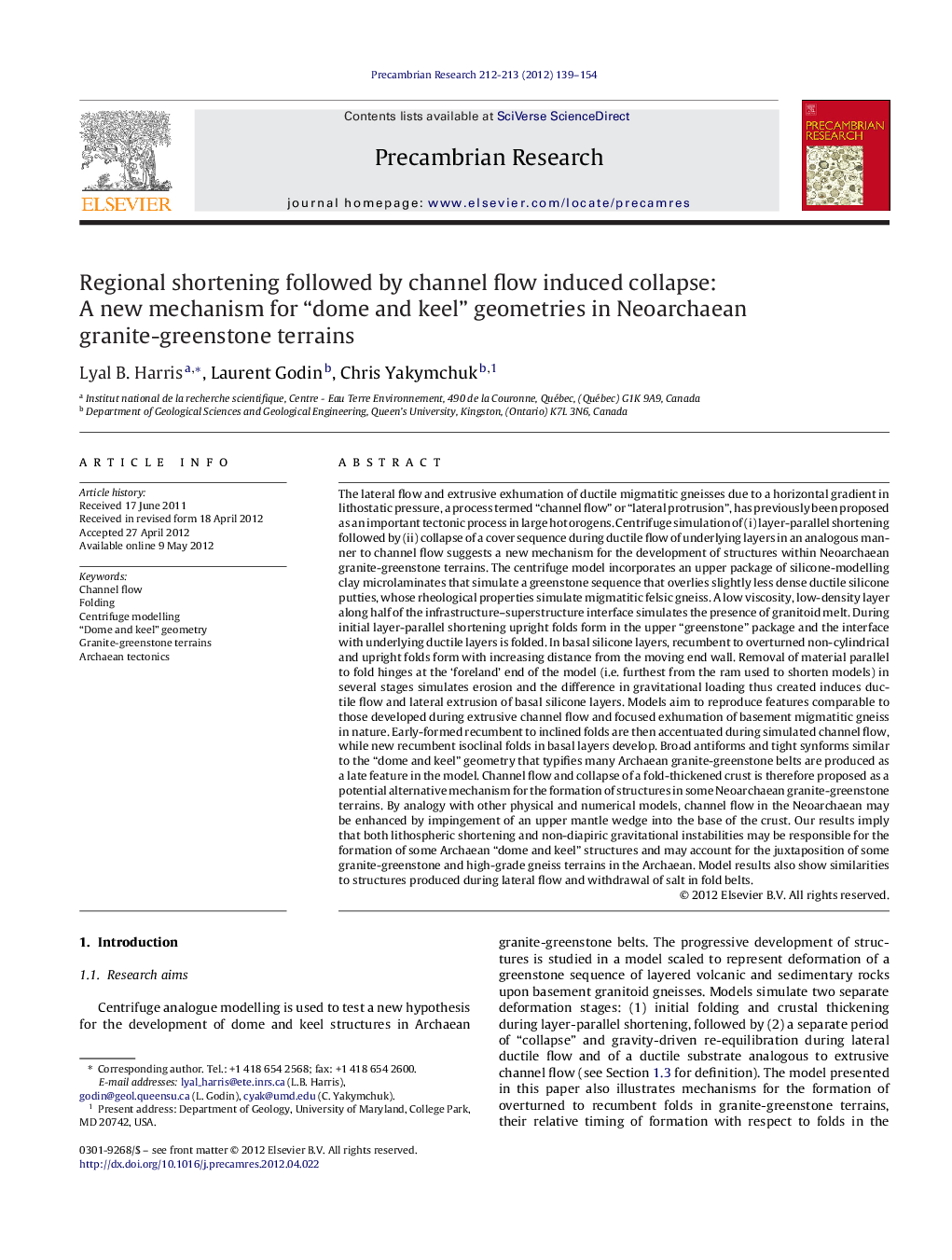| کد مقاله | کد نشریه | سال انتشار | مقاله انگلیسی | نسخه تمام متن |
|---|---|---|---|---|
| 4723538 | 1639655 | 2012 | 16 صفحه PDF | دانلود رایگان |

The lateral flow and extrusive exhumation of ductile migmatitic gneisses due to a horizontal gradient in lithostatic pressure, a process termed “channel flow” or “lateral protrusion”, has previously been proposed as an important tectonic process in large hot orogens. Centrifuge simulation of (i) layer-parallel shortening followed by (ii) collapse of a cover sequence during ductile flow of underlying layers in an analogous manner to channel flow suggests a new mechanism for the development of structures within Neoarchaean granite-greenstone terrains. The centrifuge model incorporates an upper package of silicone-modelling clay microlaminates that simulate a greenstone sequence that overlies slightly less dense ductile silicone putties, whose rheological properties simulate migmatitic felsic gneiss. A low viscosity, low-density layer along half of the infrastructure–superstructure interface simulates the presence of granitoid melt. During initial layer-parallel shortening upright folds form in the upper “greenstone” package and the interface with underlying ductile layers is folded. In basal silicone layers, recumbent to overturned non-cylindrical and upright folds form with increasing distance from the moving end wall. Removal of material parallel to fold hinges at the ‘foreland’ end of the model (i.e. furthest from the ram used to shorten models) in several stages simulates erosion and the difference in gravitational loading thus created induces ductile flow and lateral extrusion of basal silicone layers. Models aim to reproduce features comparable to those developed during extrusive channel flow and focused exhumation of basement migmatitic gneiss in nature. Early-formed recumbent to inclined folds are then accentuated during simulated channel flow, while new recumbent isoclinal folds in basal layers develop. Broad antiforms and tight synforms similar to the “dome and keel” geometry that typifies many Archaean granite-greenstone belts are produced as a late feature in the model. Channel flow and collapse of a fold-thickened crust is therefore proposed as a potential alternative mechanism for the formation of structures in some Neoarchaean granite-greenstone terrains. By analogy with other physical and numerical models, channel flow in the Neoarchaean may be enhanced by impingement of an upper mantle wedge into the base of the crust. Our results imply that both lithospheric shortening and non-diapiric gravitational instabilities may be responsible for the formation of some Archaean “dome and keel” structures and may account for the juxtaposition of some granite-greenstone and high-grade gneiss terrains in the Archaean. Model results also show similarities to structures produced during lateral flow and withdrawal of salt in fold belts.
Figure optionsDownload as PowerPoint slideHighlights
► Channel flow induced collapse after folding is simulated in centrifuge models.
► Antiforms preferentially unfold to open structures; tight synforms are preserved.
► A dome and keel geometry develops similar to Archaean granite-greenstone terrains.
► Recumbent folds without thrusts in gneisses are coeval with upright greenstone folds.
► Channel flow may explain structures in, and the juxtaposition of, Neoarchaean terrains.
Journal: Precambrian Research - Volumes 212–213, August 2012, Pages 139–154